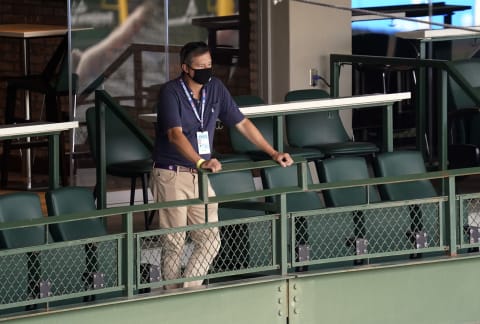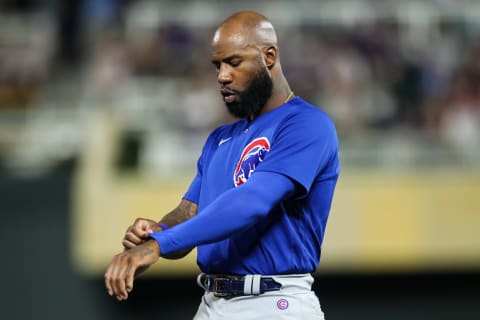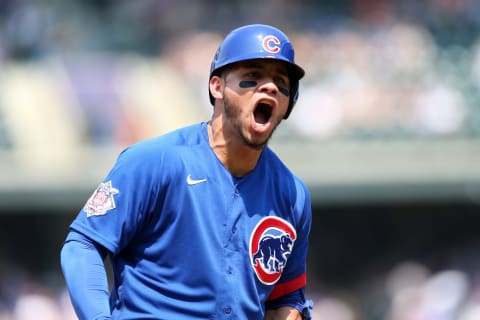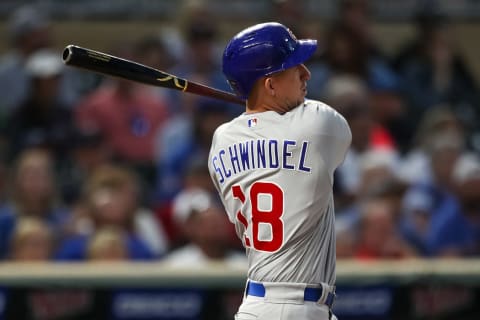Chicago Cubs: Here’s where payroll stands heading into the offseason


The Chicago Cubs brass has all but transitioned into offseason mode as the final week of the regular season wraps up. President of baseball operations Jed Hoyer has already gone on the record saying that they will be “very active” in free agency this winter. After tearing down the team at the trade deadline, the goal for this transition phase is to be quick.
The “biblical losses” excuse not to spend on quality free agents this winter will not fly with fans and media alike with what the payroll situation has shaped up to be. Even with the refusal to add additional significant salaries to the books the past several years, the Cubs were still among the top teams in payroll. With so much money coming off the books, the situation will be drastically different this time around.
Committed payroll is only part of the equation. There is a long list of arbitration and pre-arb players that will factor into the team’s payroll in 2022. Even with all of that mixed together though, there should be plenty of financial flexibility this offseason to make moves. Of course, one would be justified to ask whether or not they will actually use that flexibility to spend on enough quality players.

Chicago Cubs: Only three players have guaranteed contracts for 2022
Per Spotrac, the Cubs have only $41,010,000 in committed salary for next year. This is total salary between the combined base salaries and signing bonuses.
The three players on this list are Jason Heyward, Kyle Hendricks and David Bote. Heyward signed the massive $184 million deal prior to the 2016 season, while Hendricks and Bote received extensions a few years back.
To no surprise, Heyward takes up far and away most of the committed money. He is on the books for $22 million base salary, plus $2.5 million in signing bonus money. The veteran outfielder will be entering his second-to-last year under contract with the Cubs and has a full no-trade clause. While it is frustrating to see that kind of money tied up to a player who has not performed offensively, trading him away would be extremely difficult. Regardless of what uniform Heyward wears in 2022, Chicago will be paying him big bucks.
Hendricks continues under the $55.5 million extension he received back in 2019, making $14 million in 2022. Despite struggling this season, it is hard to imagine him not being a Cub in 2022. Bote will make $2.51 million as part of the five-year, $15 million extension he got in 2019. This includes a $10,000 signing bonus. This is not a lot of money tied up for a player who will probably be a bench/platoon guy going forward.

Chicago Cubs: At least one arbitration-eligible guys will receive a contract
There are currently five guys within the Cubs organization that are arbitration-eligible going into 2022, per Spotrac. This includes Willson Contreras, Ian Happ, Nick Martini, Trayce Thompson and Jonathan Holder. Note that Contreras, Happ and Holder were the three arb-eligible players who signed MLB contracts for this year.
Contreras is going to be interesting. While nothing is set in stone about his future, it is probably best to assume he is going to be a building block for the future. He has one year of team control remaining before becoming a free agent in 2023. He made $6,650,000 this year in his next-to-last trip through arbitration. A big question to ask is if Contreras will get an extension this offseason seeing as he has just that one remaining year of control. What we do know is that there are only three ways this can go this winter: he’s tendered a deal in arbitration to play for 2022, the two sides hammer out a new deal or he’s the latest in a long line of trade departures.
Happ is another question. A few months ago he was looking like a non-tender candidate with his struggles at the plate. However, his recent resurgence puts that into question. One could wonder if they tender him a contract and look to find a trade partner. Happ made $4.1 million this year after being the team’s most productive position player in 2020. If Happ does indeed get tendered a deal and he stays with the Cubs next year, it will not break the bank by any means.
The rest of the arb-eligible players are organizational depth at the most. Martini has played up and down between Triple-A and the Majors. He has had success in Iowa but not so much in the big leagues. Thompson has bounced around several organizations since his MLB debut with the Sox in 2015 and is, at most, the final guy on an MLB roster. Holder has not pitched in the Majors this year due to a shoulder injury.

Chicago Cubs: A majority of players are pre-arb with remaining team control
QUICK NOTE: League-minimum salary, pre-arb/arb, service time, etc. could see some significant changes this offseason as the current CBA expires this year.
To easily break down pre-arb players currently on the Cubs, we will do position players and pitchers. Pre-arbitration MLB players typically make around league minimum in salary. In 2021 the league minimum was at $570.5K. It has steadily increased over the years. Reminder: Per Spotrac, the following pre-arb players have at least another year of team control beyond 2021. There are other pre-arb players currently on the roster who could be a part of the team in 2022.
Position Players:
Nico Hoerner, Nick Madrigal, Patrick Wisdom, Frank Schwindel, Rafael Ortega, Michael Hermosillo, Sergio Alcantara
Pitchers:
Alec Mills, Adbert Alzolay, Codi Heuer, Adrian Sampson, Kohl Stewart, Rowan Wick, Brad Wieck
Two of the key cornerstones of the future can be found here in Hoerner and Madrigal. Both are set to be arbitration-eligible in 2023. Obviously, count on them being part of the team in 2022 and make around the league minimum unless Hoyer decides to extend one or two of them on a club-friendly deal a la Rick Hahn. Not sure that will actually happen but just throwing it out there.
Alzolay, Heuer and Wick have at least established themselves as being part of the future with the upside they have shown. Even with Alzolay’s struggles as a starter, his work as a reliever has been good and it is hard to throw in the towel on a guy that has the stuff he has. Mills seems more likely than not to stick around as well as bottom-rotation depth and Sampson has played well enough to earn a look in 2022.
Position-wise, much has been made about the efforts of Wisdom, Schwindel and Ortega. It is fair to say these guys have earned another look beyond this year. Do not expect anything more than one-year looks and no long-term extensions as these are late-bloomers around age 30. Again you are looking around league minimum if they are on MLB contracts (as opposed to MiLB contracts or non-roster invitees). With all of this said, what the Cubs do in free agency could determine how many of these types of guys will be back next year. If there is a chance to strengthen a position with a proven veteran, then one of these guys could be an odd man out.
The rest of the payroll outside of trades and free agents will be determined by which prospects/minor leaguers will make their way to the roster. The current 40-man roster per MLB.com includes minor leaguers Brailyn Marquez, Jason Adam, Corey Abbott, Anderson Espinoza, Alexander Vizcaino, Miguel Amaya, Christopher Morel and Alexander Canario. This will obviously fluctuate as time goes on.
Next. Home finale ends in a thud. dark
Digesting all of this info leads to one conclusion, the Cubs have to spend this offseason. If they want to improve they need to spend wisely and they do not have an excuse not to. The financial flexibility will be there, even adding in arbitration and pre-arb players. What will be really interesting is to see how the new CBA negotiations play out.